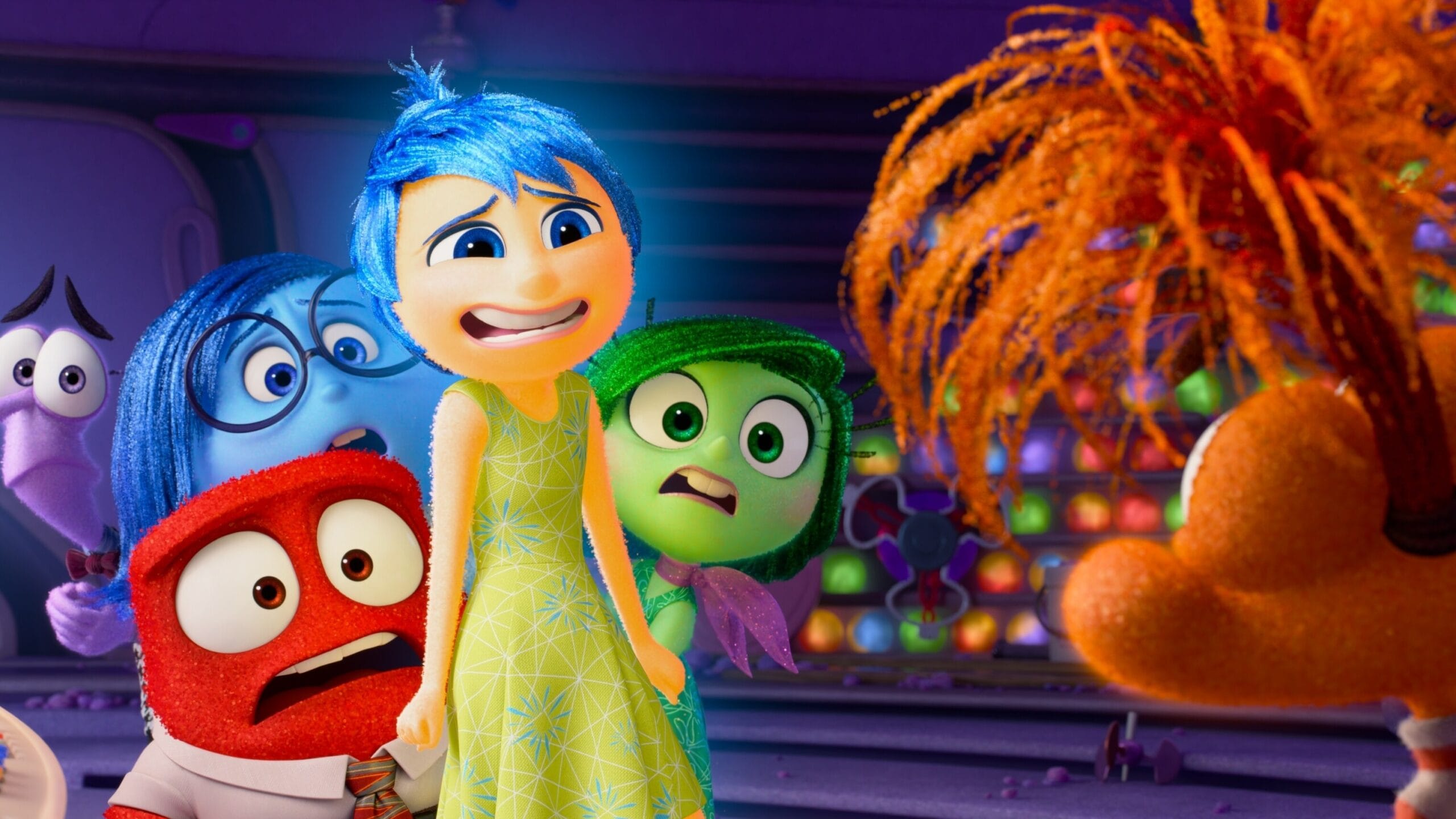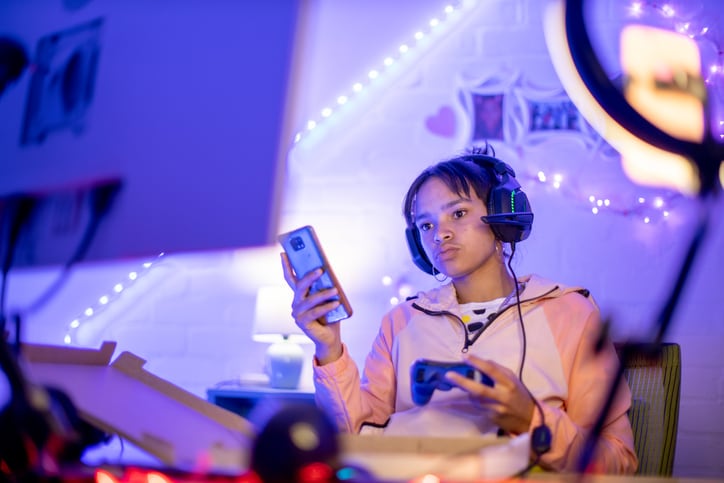For as long as social media has existed, parents have flooded it with cute back-to-school photos of their kids, snaps from holidays and birthday parties and even entire accounts devoted to sharing photos of children as they grow up. But the internet is not always a safe place for kids, and the growing threat of online predators, child exploitation and even artificial intelligence (AI) manipulation has many parents rethinking how and where they post about their kids.
“Unfortunately, the internet is much darker than any of us realize,” says Titania Jordan, the chief parent officer of Bark Technologies and author and founder of “Parenting in a Tech World.” “We like to think it’s just a place for connection or entertainment or creation, but it is the entire world… and when you put your children online in public spaces, bad people can find them and save their photos, distribute their photos and manipulate their photos for inappropriate reasons.”
More and more parents are waking up to the dangers of sharing kids’ photos and videos online. One of them is Samantha Kastenholt, a TikTok influencer who’s gone viral for vowing not to post about her 7-month-old daughter anymore following an influx of “creepy” interactions with followers. In a video with more than two million views, she’s spoken out about the threats kids face on social media, and it’s a wakeup call for parents.
Why parents are banning kid content from social media
In a video on her TikTok page, Kastenholt says she’s removing her infant daughter from social media in order to protect her from “gross people” who target kids online.
“We [my husband and I] had a very long talk about this, and I just feel like we live in a very disgusting world,” Kastenholt explains in the video. “It’s so sad because I spent five years trying to get pregnant… so I was so proud to show off my miracle baby and show our lives and everything we’re doing in such an innocent way. But there are so many gross people out there, and the saves on my videos just keep getting higher and higher.”
Kastenholt’s video touches on a phenomenon experienced by a number of other parents online — hundreds of strangers, mostly adult men, saving kids’ videos and photos once they’re posted. Another popular TikTok account featuring a 4-year-old named Wren Eleanor has been the subject of intense debate about sharing videos of kids online. The uproar occurred after followers noticed the same issue: The preschooler’s posts often have thousands of saves, particularly if they feature Wren wearing a swimsuit or eating certain foods.
In her TikTok video, Kastenholt adds that she often receives creepy messages from strangers saying things like, “I’m in love with your baby.” She also says a private Instagram account she created to share photos of her daughter has “over 600 friend requests from men.”
“500,000 child Instagram accounts have ‘inappropriate’ interactions every day.”
— Meta internal report via The New York Times
In February, The New York Times published a shocking report that found child and family social media accounts are frequent targets for child predators. According to the report, popular social media accounts that feature photos and videos of kids have a “higher proportion” of adult male followers, sometimes accounting for as much as 90% of their following. These followers frequently leave inappropriate comments, as well as save and distribute the shared content. The Times report cites an internal analysis by Meta, Instagram’s parent company, which states that “500,000 child Instagram accounts have ‘inappropriate’ interactions every day.”
What are the risks of posting kids’ photos online?
While child and family influencers are frequent targets for predatory online behavior, these aren’t the only people who need to worry about sharing images of their kids. Any parent or child can be vulnerable to the dangers of sharing on social media. Here are the potential risks experts say parents need to consider before they click “post.”
Stolen images and videos
Videos and photos can be easily saved, copied and distributed, especially for nefarious purposes. According to The New York Times, it’s common for images and videos of kids to end up on third party sites where “men openly fantasize about sexually abusing the children they follow on Instagram and extol the platform for making the images so readily available.”
“Deep fake” AI
As the use of AI expands, so does the risk of the technology being used to create inappropriate content using kids’ photos and videos from social media.
“Deep fake AI is synthetic media, and it’s been digitally manipulated to replace somebody’s actual likeness with that of another — let’s say a fake body on a real head,” Jordan explains. “So, people who are creating these can take your innocent photo of your child, their face, etc. and put it on somebody else’s not-so-innocent body. It’s not just used to make photos but also videos. That’s happening more and more.”
Identity theft
“Children’s data is a huge target now online,” Jordan says. You may think you’re being careful, but even an innocent school photo can reveal things like your child’s age, full name, grade level and other private information. Scammers and data thieves are savvy, and this could make kids vulnerable to identity theft and other online scams.
Child exploitation
“The risk for children to be identified by strangers and then contacted in real life is not low,” Jordan says. “The more information that a stranger has about your child gives them a greater ability to connect them, befriend them, groom them and convince them to meet them in real life. It has happened. It continues to happen again.”
“A public YouTube channel or a public TikTok account is not the place to be sharing photos and videos that include your children. It’s just not. The risks outweigh the benefits.”
— Titania Jordan, chief parent officer, Bark Technologies
Is there a safer way to share kids’ photos and videos online?
The safest way to share photos and videos of kids is via private accounts or text threads that only include family and friends, Jordan says. “A public YouTube channel or a public TikTok account is not the place to be sharing photos and videos that include your children. It’s just not. The risks outweigh the benefits.”
When you create a private circle in which to share content about your kids, make sure it meets the following criteria:
- Include only people you know in real life.
- Limit access to 50 people or fewer.
- Don’t share vulnerable content, such as bathroom photos.
“Based on what we know about the rate of childhood sexual abuse, it’s often [committed by] somebody that knows your child,” says Jordan. “So, even if it is close friends and family, please avoid certain media. For example, if your child is in a bathtub and certain body parts are exposed, again, you might think it’s innocent, but to other people it’s not.”
Can I delete my kids’ digital footprint once it’s already been created?
If you haven’t been as careful about posting your child’s images as you’d like, don’t feel guilty. Many parents and caregivers are learning as they go, and it’s always possible to course correct.
“As a general rule, if you put anything online, even on something like Snapchat that supposedly goes away, it still lives on a server somewhere,” Jordan says. “Anything that you do digitally, there’s a footprint for it. That said, some things do eventually go away and are erased after a certain point, so it’s never too late to start redacting your child’s digital footprint.”
If you’ve posted about your kids in the past and want to reverse course, Jordan recommends taking the following steps:
- Review your social media history as far back as your very first posts about your child.
- Delete any photos, videos or other content if possible.
- If something can’t be deleted, make it viewable only by you.
- Don’t forget to review past status updates, location check-ins and other sensitive posts.
Once you’ve cleared away the existing content, think carefully about new posts you make. “You’ve really got to think about the benefit of posting something, and ask yourself, ‘What’s the point?'” Jordan says. “What is the point of me putting my child’s first day of school photo online where they’re holding their plaque and telling everybody what school they go to, what classroom they’re in, what their favorite color is? That’s personally identifiable information, and there aren’t that many people who need to know that.”
The bottom line
The sheer number of social media accounts that feature posts about kids can make it seem normal and even safe to share kids’ images online. But social media is a vast landscape where we have the ability to connect with so many people, not all of whom have good intentions.
It’s normal to want to share the cute, clever and sometimes amazing things kids do. But, as parents and caregivers, there’s also a responsibility to balance that desire with the risks kids can face on social media and the need to protect their privacy. Before you share a photo, video or even status update about a child, think carefully about how the content you’re sharing could be used or even digitally manipulated by strangers online.
It’s never too late to rethink your relationship to social media or to make changes to the way you share. As Jordan concludes, “I love my son, and I want to share certain moments with close friends and family — and that’s exactly what we should keep it to is close friends and family.”






